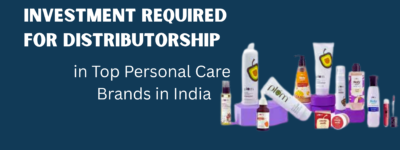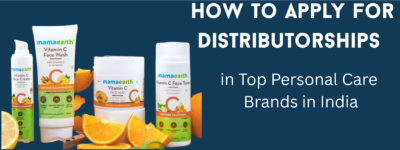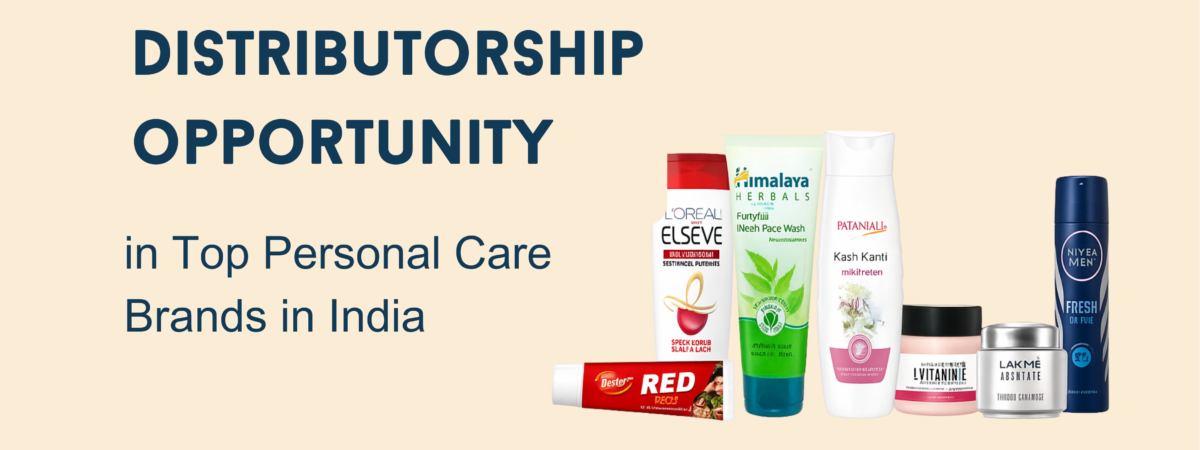Distributorship Opportunity in Top Personal Care Brands in India: A Complete Guide
India’s personal care market is one of the most resilient and fast-evolving consumer categories. From ayurvedic heritage labels and salon-grade dermocosmetics to mass-premium global names, the category spans price points and channels—making personal care distributorship a compelling opportunity for entrepreneurs and established traders alike. This guide breaks down the landscape, brand types, requirements, margins (at a high level), and a practical playbook to get started and scale.
Why Personal Care Distributorship is Attractive
-
High purchase frequency: Soaps, shampoos, creams, and deodorants are staples—consumers replenish monthly or even weekly.
-
Multi-channel demand: General trade (kiranas), modern trade, chemists, salons, ecommerce, and quick commerce all drive volume.
-
Premiumization tailwind: Consumers are trading up to specialized products (serums, sunscreens, scalp care, naturals), improving average order value.
-
Innovation pipeline: D2C brands and incumbents release new formats and ingredients regularly, giving distributors fresh levers for growth.
Brand Landscape: Choose Your Lane
Distributorship Opportunity in Top Personal Care Brands in India
Think of the market in four broad buckets. Many distributors carry a mix to balance volume and margins.
-
Mass FMCG & Daily Essentials
Examples: soaps, shampoos, talc, deodorants, men’s grooming basics.-
Pros: Huge volumes, fast turns, strong brand pull.
-
Consider: Higher working capital, disciplined logistics, and service levels.
-
-
Ayurvedic, Herbal & Heritage
Examples: classical oils, herbal face wash, natural soaps, toothpastes.-
Pros: Pan-India trust, wide demographics, recession-resilient.
-
Consider: Regional seasonality (e.g., winter creams), educate retailers on benefits.
-
-
Premium Beauty & Dermocosmetics
Examples: serums, sunscreens (SPF 30–50+), actives (AHA/BHA, niacinamide), hair serums.-
Pros: Higher per-unit margins, growing demand in modern trade, pharmacies, and salons.
-
Consider: Slower turns than mass, needs product training and visual merchandising.
-
-
Emerging & D2C Challenger Brands
Examples: niche haircare, clean beauty, men’s grooming lines, baby care naturals.-
Pros: Territory exclusivity is more achievable; strong digital marketing support.
-
Consider: Brand awareness building takes time; negotiate marketing co-op.
-
What Top Brands Typically Expect from Distributors
-
Infrastructure: Warehouse (often 600–2,000+ sq ft depending on brand mix), basic racking, safe storage for liquids/creams, and FIFO controls.
-
Coverage Plan: Beat routes for general trade, a chemist/salon list, and relationships with regional modern trade chains.
-
People & Processes: Sales reps/merchandisers, order-taking cadence, claims handling, and a simple DMS/Excel-based tracking if not provided by the brand.
-
Compliance: GST, FSSAI (if required for certain categories like lip balm), basic agreements, and brand usage guidelines.
-
Capital: Working capital to hold 2–6 weeks of inventory, plus credit to retailers as per market norms.
Margin & Investment: What to Expect (General Ranges)
-
Mass essentials: Lower per-unit margin but high velocity.
-
Ayurvedic & naturals: Mid-range margins, stable repeats.
-
Premium/dermo & salon: Higher per-unit margin, moderate turns.
-
Emerging/D2C: Often offer attractive schemes to build presence.
Beyond the base margin, most brands run trade schemes (slab discounts, free quantities, new-launch incentives) that can meaningfully lift effective margin when executed well.
Channel Strategy: Where the Volume Comes From
-
General Trade (GT): The backbone—fast repeats on bath, haircare, talc, deo. Route planning and fill rate matter most.
-
Modern Trade (MT): Fewer outlets but larger baskets; requires planograms, on-shelf availability, and periodic audits.
-
Pharmacies/Chemists: Critical for dermo, sunscreens, baby care, and medicated shampoos.
-
Salons & Professional: Smaller network but high-value SKUs; education and sampling win.
-
Ecommerce & Quick Commerce (B2B supply): Consistent packaging quality, GTIN accuracy, and on-time replenishment are key.
Building a Competitive Distributor Pitch
When approaching top personal care brands, your proposal should clearly answer “Why you?”:
-
Territory Map & Outlet Universe: GT beats, chemists, salons, MT accounts, and potential door expansion.
-
Team Structure: Supervisors, SRs, delivery staff; hiring plans for new categories.
-
Infrastructure: Warehouse photos, capacity, racking, temperature control if needed.
-
Process & Tech: Order cycle, DMS/Excel discipline, inventory norms, claims SOP, secondary sales capture.
-
Cash Flow Strength: Working capital availability and banker references.
-
Activation Plan: Launch calendar, sampling/BA support, seasonal pushes (e.g., summer deo & SPF, monsoon scalp care, winter creams).
Operations Playbook: From First PO to Steady State
-
Assortment Planning: Start with the brand’s top 30–60 SKUs by national sell-through. Layer local winners after 2–3 cycles.
-
MOQ & Reorder: Maintain two buffers—display stock and safety stock. Reorder weekly; avoid over-indexing on slow movers.
-
Beat Discipline: 6-day coverage, fixed call sequence, and weekly KPI reviews (strike rate, average bill value, SKU depth).
-
Merchandising & Visibility: Shelf strips, wobblers, testers (where allowed), and end-caps in MT.
-
Claims & Damages: Photograph on receipt, log within 24–48 hours, and maintain a quarantine shelf.
-
Data Rhythm: Share sell-in/sell-through snapshots with the brand—helps you secure schemes, co-op budgets, and launches.
Marketing That Moves the Needle
-
Micro-launches by cluster: E.g., SPF push at chemists and MT from Feb–June, anti-dandruff drives in monsoon, heavy moisturizer in winter.
-
Retailer Advocacy: Loyalty slabs, retailer-meets, exclusive bundles (with brand approval).
-
Salon Education: Short training huddles, before-after photo logs, and introductory service kits.
-
Digital Support: Leverage brand assets; if you carry D2C challengers, ask for hyperlocal ads that tag “available at” your key outlets.
Risk Management & Compliance
-
Counterfeits & Grey Imports: Source only via official channel partners; match MRPs and batch codes.
-
Expiry & Near-Expiry: Rotate stock, run clearance schemes early, and avoid deep over-buys on slow lines.
-
Regulatory: Stick to approved claims/artwork; personal care is sensitive to labeling and safety norms.
-
Credit Discipline: Define limits by outlet type and track DSO weekly.
How to Apply for Distributorships (Step-by-Step)
-
Shortlist 4–6 Brands per Category: Mix of mass, ayurvedic, premium/dermo, and one challenger D2C.
-
Create a One-Pager Profile: Territory coverage, warehouse, team, monthly throughput in FMCG (if any), and references.
-
Gather Proofs: GST, registration documents, bank letter, and photos of warehouse & vehicles.
-
Reach the Right Contact: Use official “Become a Distributor/Partner” forms or corporate contact pages; for D2C, founders/BD emails on LinkedIn often work.
-
Pitch the Plan: Lead with coverage, execution, and how you’ll win the first 90 days.
-
Negotiate the Commercials: Territory exclusivity (if feasible), opening order size, credit days, schemes, BA support for premium lines, and return/claims policy.
-
Pilot & Review: Start with a 60–90 day milestone plan—outlet additions, distribution width, and monthly sell-out targets. Apply Now Health & Beauty – 1Click Distributors
Frequently Asked Questions
Q1. What investment do I need to start?
Depends on brand mix and territory size. Plan for opening stock, 2–6 weeks of working capital, basic warehouse setup, and a lean sales/delivery team.
Q2. What margins can I expect?
Mass categories usually have thinner margins with high turns; premium/dermo and emerging D2C can offer higher effective margins, especially after schemes. Your net depends on execution quality and claims management.
Q3. Can I get territory exclusivity?
Possible with niche and emerging brands; large FMCG often allocate based on channel/geography performance. Your coverage plan and capability are decisive.
Q4. How quickly can I break even?
If you already distribute FMCG, you can leverage routes and relationships to accelerate. For new setups, focus on fast-moving SKUs and strict credit control to shorten the cycle.
Q5. GT or MT—which first?
Start where your relationships are strongest. Many begin with GT + chemists for velocity and add MT/salon once supply rhythm is stable.

